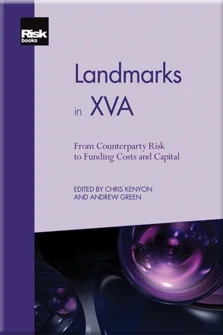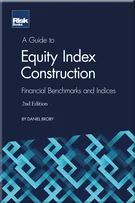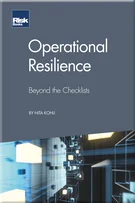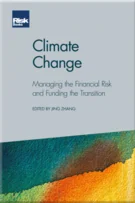Cooking with Collateral
Cooking with Collateral
Introduction
Preface to Chapter 1
Being Two-Faced over Counterparty Credit Risk
Risky Funding: A Unified Framework for Counterparty and Liquidity Charges
DVA for Assets
Pricing CDSs’ Capital Relief
The FVA Debate
The FVA Debate: Reloaded
Regulatory Costs Break Risk Neutrality
Risk Neutrality Stays
Regulatory Costs Remain
Funding beyond Discounting: Collateral Agreements and Derivatives Pricing
Cooking with Collateral
Options for Collateral Options
Partial Differential Equation Representations of Derivatives with Bilateral Counterparty Risk and Funding Costs
In the Balance
Funding Strategies, Funding Costs
The Funding Invariance Principle
Regulatory-Optimal Funding
Close-Out Convention Tensions
Funding, Collateral and Hedging: Arbitrage-Free Pricing with Credit, Collateral and Funding Costs
Bilateral Counterparty Risk with Application to Credit Default Swaps
KVA: Capital Valuation Adjustment by Replication
From FVA to KVA: Including Cost of Capital in Derivatives Pricing
Warehousing Credit Risk: Pricing, Capital and Tax
MVA by Replication and Regression
Smoking Adjoints: Fast Evaluation of Monte Carlo Greeks
Adjoint Greeks Made Easy
Bounding Wrong-Way Risk in Measuring Counterparty Risk
Wrong-Way Risk the Right Way: Accounting for Joint Defaults in CVA
Backward Induction for Future Values
A Non-Linear PDE for XVA by Forward Monte Carlo
Efficient XVA Management: Pricing, Hedging and Allocation
Accounting for KVA under IFRS 13
FVA Accounting, Risk Management and Collateral Trading
Derivatives Funding, Netting and Accounting
Managing XVA in the Ring-Fenced Bank
XVA: A Banking Supervisory Perspective
An Annotated Bibliography of XVA
An economy without a risk-free rate has been considered in the past (see Black 1972), but traditional derivatives pricing theory (see, for example, Duffie 2001) assumed the existence of such a rate as a matter of course. Until the global financial crisis, this assumption worked well, but since the crisis even government bonds cannot be considered credit risk-free. Hence, using a risk-free money-market account or a zero-coupon bond as a foundation for asset pricing theory needs revisiting. While some of the standard constructions in asset pricing theory could be reinterpreted in a way consistent with the developments of this chapter, there is significant value in going through the steps of derivations to show how they should be adapted to the prevailing market practice. This is the programme we carry out here.
What comes closest to a credit risk-free asset in a modern economy, in our view, is an asset fully collateralised on a continuous basis. Of course, possible jumps in asset values and practicalities of collateral monitoring and posting do not allow for full elimination of credit risk, but we will neglect this here.
A collateralised asset is fundamentally different from the
Copyright Infopro Digital Limited. All rights reserved.
As outlined in our terms and conditions, https://www.infopro-digital.com/terms-and-conditions/subscriptions/ (point 2.4), printing is limited to a single copy.
If you would like to purchase additional rights please email info@risk.net
Copyright Infopro Digital Limited. All rights reserved.
You may share this content using our article tools. As outlined in our terms and conditions, https://www.infopro-digital.com/terms-and-conditions/subscriptions/ (clause 2.4), an Authorised User may only make one copy of the materials for their own personal use. You must also comply with the restrictions in clause 2.5.
If you would like to purchase additional rights please email info@risk.net









